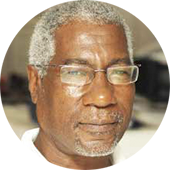
Forward-thinking and progressive management of the returns from Guyana’s ever-growing oil boom is attracting positive responses from the global energy industry; and Saint Lucia is attracting rave reviews from international and regional reviews for its current economic performance.
Guyana continues outpacing the Caribbean Community (CARICOM) with economic growth projections now at approximately 47% for 2022; and Saint Lucia is heading for 8% — which will outstep Barbados and its fellow small-island economies in the Eastern Caribbean chain.
One of every three barrels of oil produced in the past two years coming from CARICOM’s biggest – and now richest – nation; and likewise, Saint Lucia is also outpacing Barbados and all its five other neighbours in the Organization of Eastern Caribbean States (OECS).
The International Monetary Fund (IMF) recently concluded its 2022 Article IV Saint Lucia Consultation, which says despite Saint Lucia having been “severely affected” by COVID-19 and import price increases, it’s still on course to outperform Antigua and Barbuda, Barbados, Dominica, Grenada, Saint Kitts and Nevis and Saint Vincent and the Grenadines.
The report identified several fault lines to be addressed and repaired and that significant challenges ahead include the “public balance sheet remaining under pressure with a sizeable fiscal deficit, high rollover needs and a sharp increase in public debt, as well as the looming threat of natural disasters.”
Against this backdrop, the IMF emphasized the need to address fiscal and financial constraints to public and private investment, “to foster a sustainable and inclusive recovery…”
But the IMF is not alone in highlighting Saint Lucia’s upward trajectory under the leadership of Prime Minister Philip J. Pierre and his Saint Lucia Labour Party (SLP) administration after only 14 months in office.
The Economic Commission for Latin America and the Caribbean (ECLAC) in September projected the island’s economy “will realize the highest GDP growth among Eastern Caribbean Currency Union [ECCU] Member States in 2022.”
Sound fiscal policies rooted in the Pierre Administration’s maiden Budget of 2022/23 have also set Saint Lucia on course to grow by up to 8% this year.
ECLAC’s projections were published in its Annual Report entitles Economic Survey of Latin America and the Caribbean 2022: Trends and challenges of investing for a sustainable and inclusive recovery.
In the first eight months of 2022, the Pierre administration engaged various investors interested in developing and expanding accommodation properties and introducing internationally recognized hotel brands to the island, with an estimated value of over $320 million.
Two routine annual national economic surveys also each produced encouraging conclusions on Saint Lucia’s economic performance during the first quarter of 2022.
The quarterly Labour Force Survey conducted by the island’s Central Statistical Office [CSO] for January to March 2022 estimated unemployment stood at 16.1% — after having remained above 20% for more than six years.
The Saint Lucia Chamber of Commerce in July 2022 also published its First Quarter (January to March) Business Performance Survey, which found that 59% of its membership earned more between January and March 2022 than the same period in 2021.
It also found: 83% of businesses retained and added more jobs during First Quarter 2022; 59% had forecast increased revenue for April to June 2022; 66% forecast increased turnover over the next 12 months; and 71% forecast increased profitability over the next year.
According to Chamber Executive Director Brian Louisy, “Business confidence appears to be on the rise, as only 29% of businesses surveyed reported worsened cash flow relative to the previous quarter.”
The CSO estimated the island’s Labour Force in First Quarter 2022 at approximately 104,262 workers — more than 83% employed during that three-month period.
Prime Minister Pierre said (at the time) he hoped his government’s implementation of targeted fiscal policies and the rollout of his innovative Youth Economy agency, “will create a vibrant and more conducive economic space that encourages private sector expansion and also decisively addresses youth unemployment.”
In just 14 months, his administration has done a serious repair job to fix and start addressing the many problems inherited from the previous United Workers Party (UWP) administration after five years (2016-2021), including the highest debt ever, inability to restore promised glory to the banana industry, to fix the Hewanorra International Airport (HIA), or to complete the St. Jude Hospital that burned in 2010.
The current glowing international and regional tributes acknowledge the most vulnerable citizens are being protected from the full extent of price increases in fuel and transport, thanks to conversion of government’s incomes from taxing imported oil and gas products into subsidies for cooking gas and concessions to keep public transport fares lower.
The Saint Lucia government has refrained from imposing major new taxes, while increasing expenditures on social support services, including payments to elderly and disabled persons and encouraging public utilities to avoid rate increases that can depress their customers’ ability to continue paying already-high rates.
Same in Guyana, where the administration is continuously rolling-out new and positive measures to accelerate the receipt and expenditure of expanding oil revenues to ensure the new national resources are spread sufficiently far-and-wide to touch and make a difference in more people’s lives.
But all of this has nothing to do with good luck or magic, instead boiling down to the fact that the two ruling parties in Saint Lucia and Guyana – the SLP and the PPP/Civic – are historically and philosophically people-centered parties that have a common underlying and overarching principle of ‘Putting People First’ and ‘Practicing People’s Power’ in all they do.
Both not just talk, but also walk the talk with implementation of the philosophical principles that have guided them since their establishment in the 1950s, after Britain was forced to allow the formation of trade unions in the West Indies, out of which grew the establishment of the PPP and the SLP – and their successive election and re-election victories, from then to now, as they continue to put people first in all they do, in or out of office.












